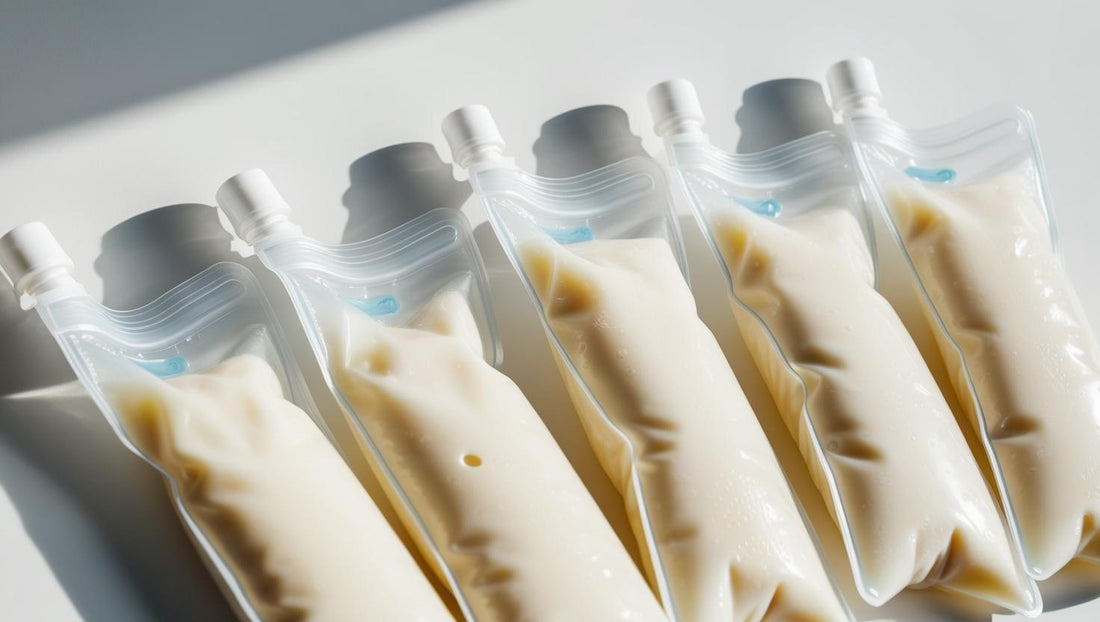
The Miraculous Journey: Understanding How Breast Milk Is Produced
Share
Breast milk is often referred to as "liquid gold," providing optimal nutrition tailored specifically for infants. The process by which a mother's body produces this vital sustenance is both intricate and fascinating.
The Anatomy of Milk Production
At the heart of milk production are the alveoli—tiny, grape-like clusters of cells within the breast. These alveoli are responsible for producing and storing milk. When it's time to feed, milk travels from the alveoli through a network of milk ducts to the nipple, ready for the baby to consume.
Hormonal Orchestration
Two primary hormones play pivotal roles in lactation:
- Prolactin: Often dubbed the "milk-producing hormone," prolactin stimulates the alveoli to produce milk. Its levels rise during pregnancy, preparing the breasts for lactation, and remain elevated after childbirth to ensure a steady milk supply.
- Oxytocin: Known as the "let-down" hormone, oxytocin causes the muscles around the alveoli to contract, propelling milk through the ducts to the nipple. This hormone is also associated with bonding and emotional connection between mother and child.
The Stages of Lactation
1. Lactogenesis I: This initial stage begins during pregnancy. Hormones like estrogen and progesterone prepare the breast tissue for milk production, leading to the development of the alveoli and the secretion of colostrum—the nutrient-rich first milk.
2. Lactogenesis II: Following the delivery of the placenta, there's a significant drop in progesterone levels, allowing prolactin to initiate copious milk production. This stage typically occurs between the second and fifth day postpartum, marking the "coming in" of mature milk.
3. Lactogenesis III: Also known as the maintenance stage, this phase is characterized by the establishment of a stable milk supply. Milk production becomes primarily regulated by the baby's demand and the effective removal of milk from the breasts.
The Role of Supply and Demand
Breast milk production operates on a supply-and-demand principle. The more frequently and effectively milk is removed—whether through breastfeeding or pumping—the more milk the body is signaled to produce. This dynamic ensures that the baby's nutritional needs are met as they grow.
Factors Influencing Milk Production
Several elements can impact lactation:
- Frequency of Feeding: Regular breastfeeding or pumping stimulates milk production. Infrequent feeding can lead to decreased supply.
- Maternal Health: A mother's physical and emotional well-being significantly affects milk production. Stress, fatigue, and poor nutrition can hinder lactation.
- Infant's Latch: An effective latch ensures efficient milk removal, promoting continued production. Difficulties with latching can impede milk flow and supply.
The Dynamic Composition of Breast Milk
Breast milk isn't static; its composition changes to meet the evolving needs of the growing infant. For instance, the initial milk during a feeding session, known as foremilk, is higher in lactose and provides hydration, while the later milk, called hindmilk, is richer in fat and calories, essential for the baby's growth and development.Understanding the remarkable process of breast milk production underscores the body's innate ability to nourish and support new life. This knowledge empowers mothers to make informed decisions and seek appropriate support throughout their breastfeeding journey.
